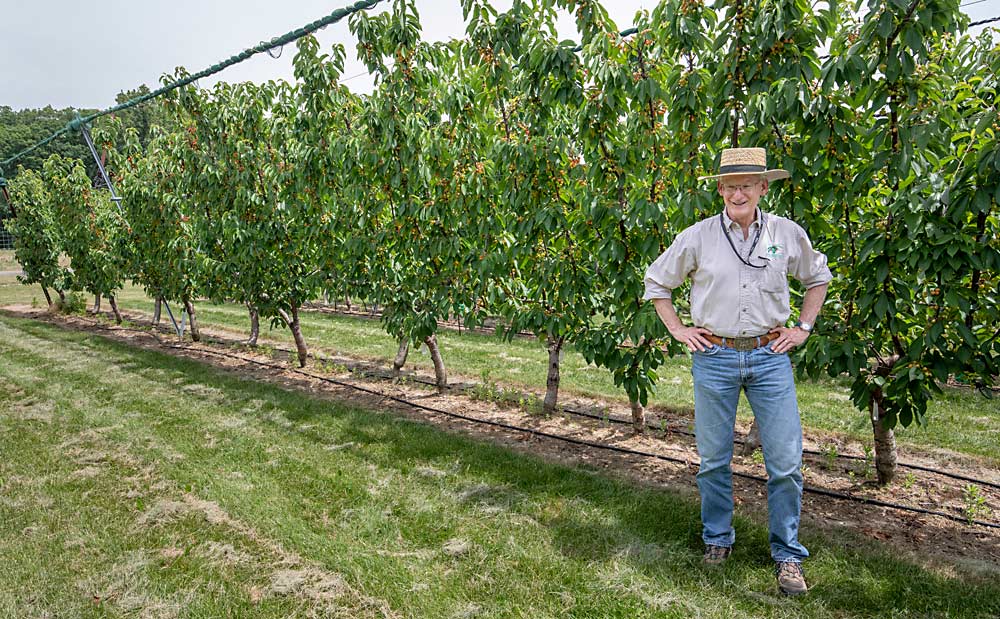
Looking at U.S. tree fruit production over the past quarter-century, it’s hard to deny the success of sweet cherries.
Tart cherry, peach and nectarine production all declined in the past 25 years. Apple production remains roughly the same, but on 30 percent fewer acres. Meanwhile, sweet cherry production has nearly doubled, while acreage has grown by 70 percent, said Michigan State University professor and tree fruit physiologist Greg Lang.
Thanks to the “radical transformation” of the past few decades, sweet cherries are closer to a fully mechanized harvest than any other fresh tree fruit, said Matt Whiting, who studied with Lang as a graduate student and succeeded him as a tree fruit physiologist at Washington State University.
It’s a remarkable story, one largely driven by new varieties, size-controlling rootstocks and greater knowledge of the cherry tree’s growth habits.
Much of that physiological knowledge can be traced back to Lang, who has spent the past three decades studying how to channel the cherry tree’s vigorous growth into more compact architectures — and teaching growers how to profitably manage the smaller trees.
Before he retires later this year, Good Fruit Grower reached out to Lang to revisit some of the key lessons he’s learned about setting up high-density cherry systems for success.
“I tell growers their next orchard needs to be flat and simple,” Lang said. “The future is going to be planar.”
Getting to know Gisela
It started in 1994 when Lang joined the WSU faculty and inherited a trial planting of dwarfing Gisela rootstocks. It was the first experimental planting of size-controlling rootstocks for cherries and, though no one knew it yet, the vanguard of a revolution in fresh sweet cherry production.
At the time, Western cherry growers still relied on “giant old trees” on Mazzard or Mahaleb rootstocks, which were difficult to manage and took at least five years to produce fruit. The prospect of trees on dwarfing rootstocks that crop by the second or third year and don’t require as much pruning was incredibly exciting, and growers started to plant them.
But there was a problem. By about their fifth year, the Gisela trees started runting out and producing tiny cherries. Lang and Whiting dived into the physiology and discovered that the leaf-to-fruit ratio must remain in balance to produce larger cherries on dwarfing rootstocks.
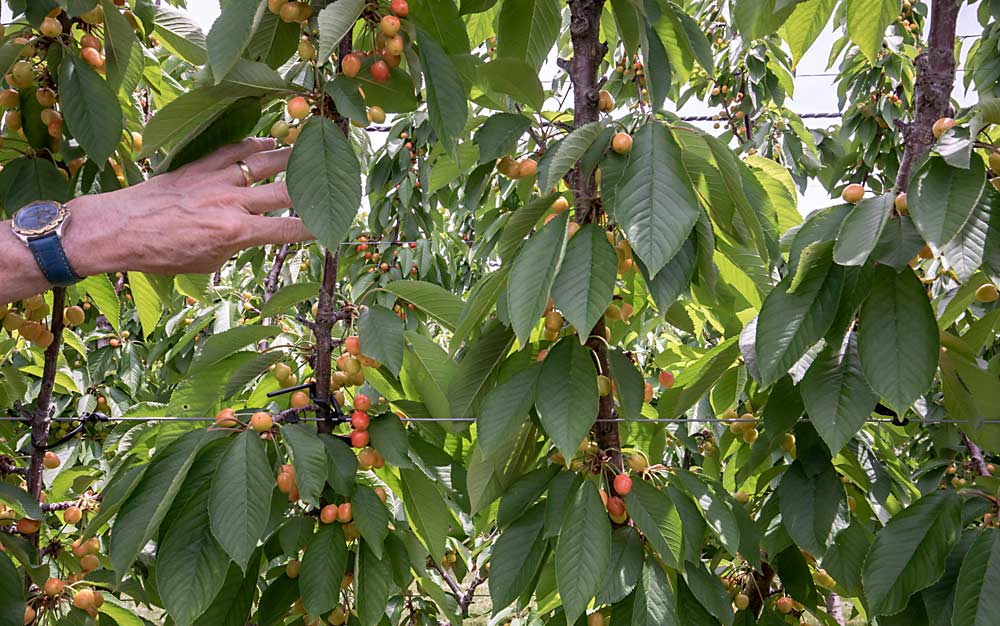
Gisela rootstocks, with their low vigor and high precocity, were the complete opposite of Mazzard, and they required a total rethink of crop load management practices, Whiting said. How much fruit could those smaller canopies carry while keeping quality high?
On older, more vigorous rootstocks, growers would bend branches down to stress the trees and boost productivity. Dwarfing trees, on the other hand, require aggressive dormant pruning and shoot tipping to remove enough fruit buds to keep the tree in balance and let the remaining fruit grow larger, Whiting said.
Denny Hayden, a cherry grower near Pasco, Washington, was “not high on Gisela” until he learned how to prune the smaller trees so they would continue to produce larger, higher-quality fruit. These days, all of his new plantings are on Gisela or Krymsk, spaced 8 by 13 feet and trained to a V-trellis. Heading cuts promote renewal when branches are tied down to the wires, he said.
Optimum architectures
As Lang and Whiting tackled the photosynthetic physiology of dwarfing cherry trees, they were also exploring optimum tree architectures for fruit quality and uniformity — a process that continued after Lang moved to Michigan State University in 2000.
There are multiple ways to achieve planar canopies in a cherry tree, Lang said, but they boil down to two basic architectures: a vertical wall and a dual-angled wall.
One example of a vertical wall is the Upright Fruiting Offshoots system, or UFO, which was developed by Lang and Whiting. For growers who emphasize labor efficiency and potential mechanization, UFO is probably the best choice, Lang said.
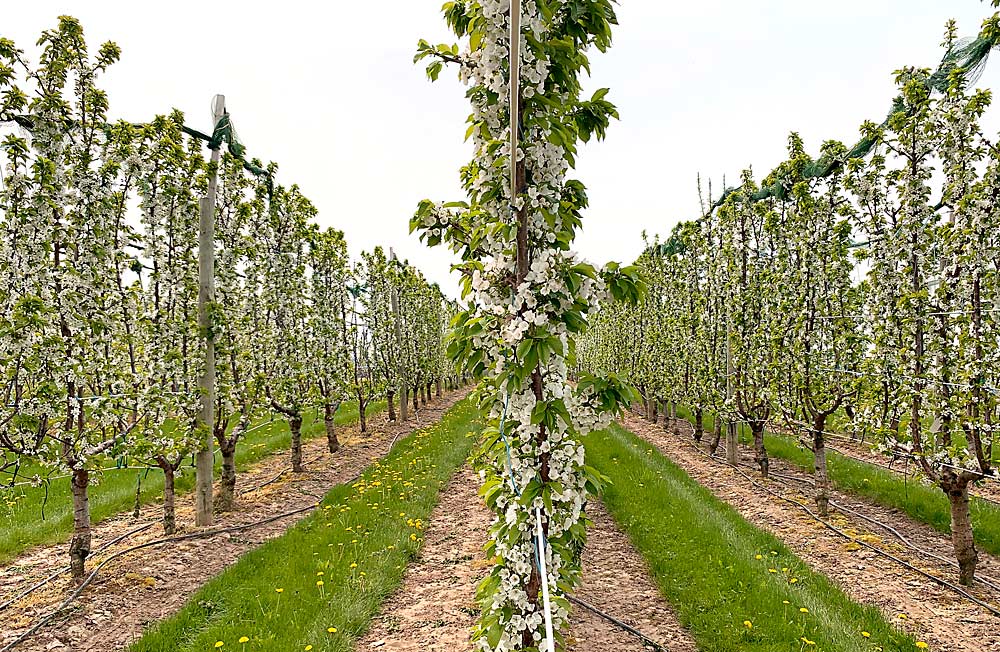
In the UFO system, the tree is planted at a 45-degree angle and bent horizontal like a grape cordon along the lowest wire of a trellis system. Renewable upright fruiting leaders grow from the cordon and form a narrow fruiting-wall architecture.
In Michigan trials of Benton on Gisela 3 and 5 comparing UFO against central leader and KGB systems, Lang found the planar UFO canopy reduces pruning and picking time by 20 to 40 percent. But growers have to be willing to take the time at the outset to establish the system.
For growers who want to maximize yields, Lang usually recommends a dual-angled wall like the V system. With its two planar arms, a V intercepts more sunlight and thus produces more than UFO, but it’s not quite as friendly to labor and mechanization, he said.
Hayden said he likes the V for its uniformity and ease of pruning and picking. He also likes the amount of light V systems receive, though both arms of the V must be cleaned out to ensure the light goes all the way to the bottom.
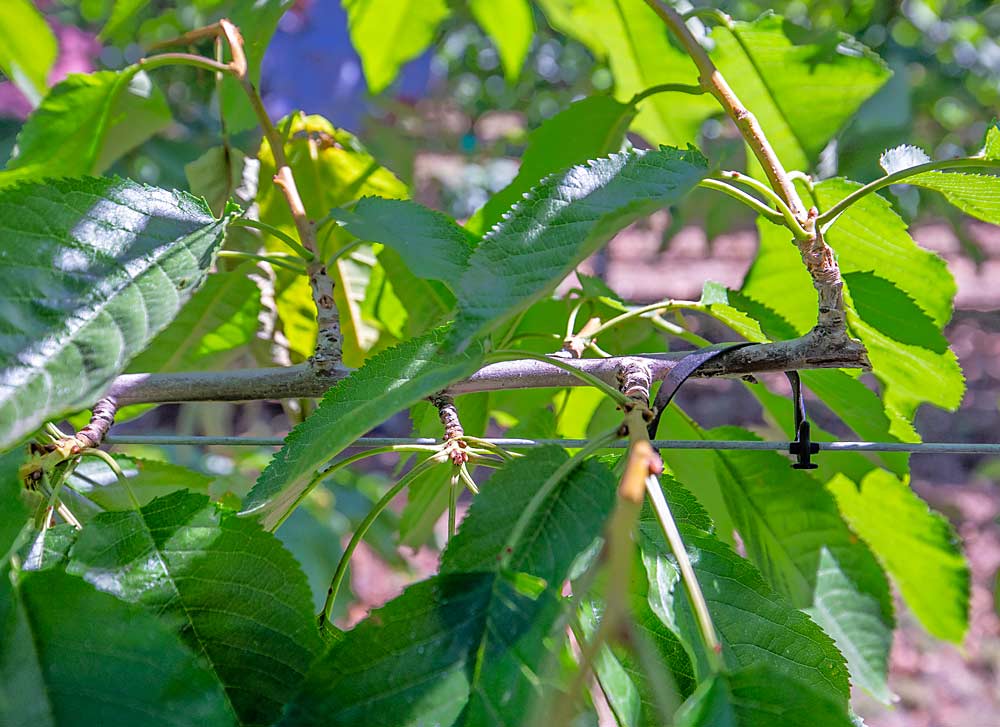
The pace of change
In Michigan, where Lang has spent the past 23 years of his career, a nascent fresh-market sweet cherry industry is beginning to emerge, embracing high density from the start.
Sparta-based Riveridge Produce Marketing, the largest fresh apple packer in Michigan, has planted 32 acres of fresh sweet cherries on V-trellis over the past several years. Many have protective coverings, and the company plans to plant more. Cherry Bay Orchards, a large tart cherry producer in Northwest Michigan, planted about 23 acres of fresh sweet cherries in 2021. The trees are trained spindle-style on Gisela rootstocks. Cherry Bay expects its first fresh crop in 2024, said orchard manager Emma Grant.
In Washington’s much larger fresh cherry industry, there are still many traditional blocks turning a profit. As long as growers were making good money and had access to affordable labor, there wasn’t a tremendous need for the efficiencies of compact trees. Rising labor costs make high-density cherry plantings look much more practical, Lang said.
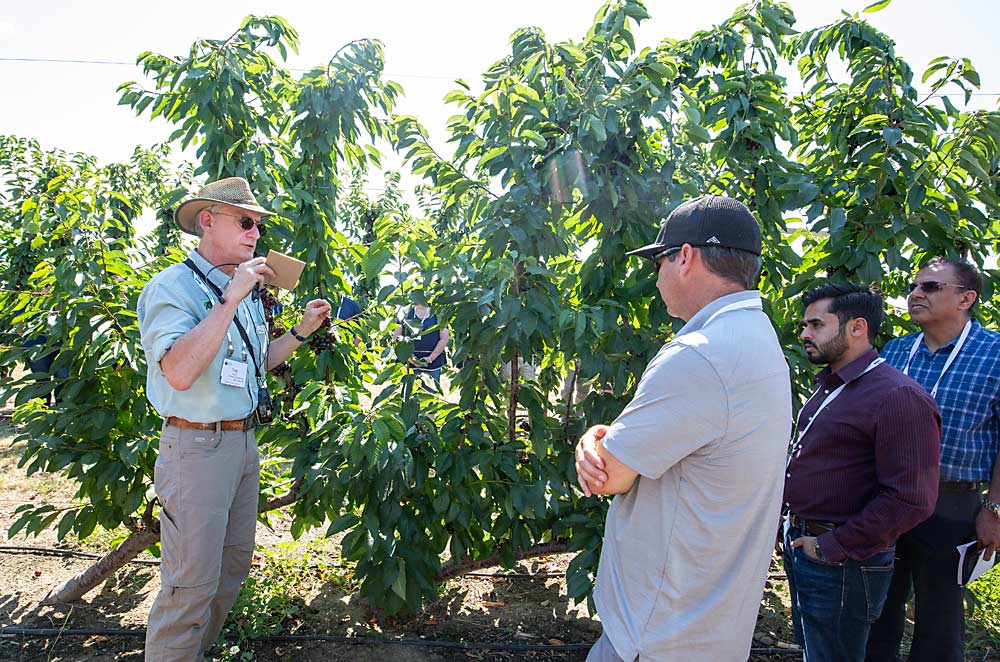
But the cost of labor is just one factor in a grower’s decision-making process.
Another factor might be the X disease epidemic that has recently driven the removal of hundreds of thousands of cherry trees in the Pacific Northwest. While some growers are hesitant to replant right away, especially with the high cost for investing in high density, others are taking it as a chance to modernize.
Despite the disease pressure in the region, “I still advocate for these high-density systems,” Whiting said. The establishment costs might be twice that of a medium-density planting, but “the ability to come into production quickly with the precocious system does matter.”
Still, not as many growers as he would have expected are ready to embrace the high-density approach.
“The research data is just one piece of the puzzle in a replant decision,” he said. “But the research is good, the results are still there. We’ve got the information about how to do this for whenever growers are ready.”
—by Matt Milkovich

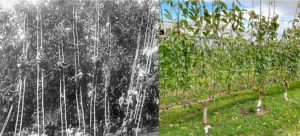
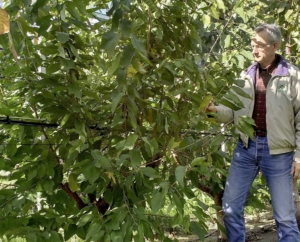
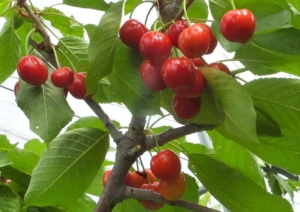





Leave A Comment